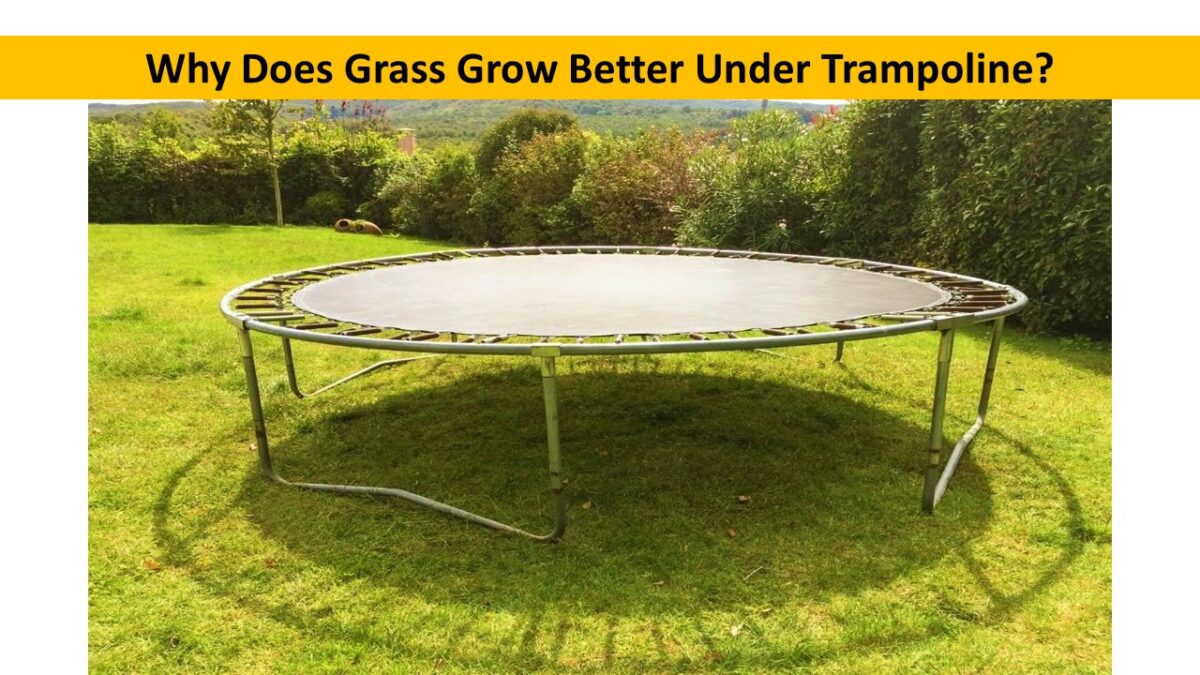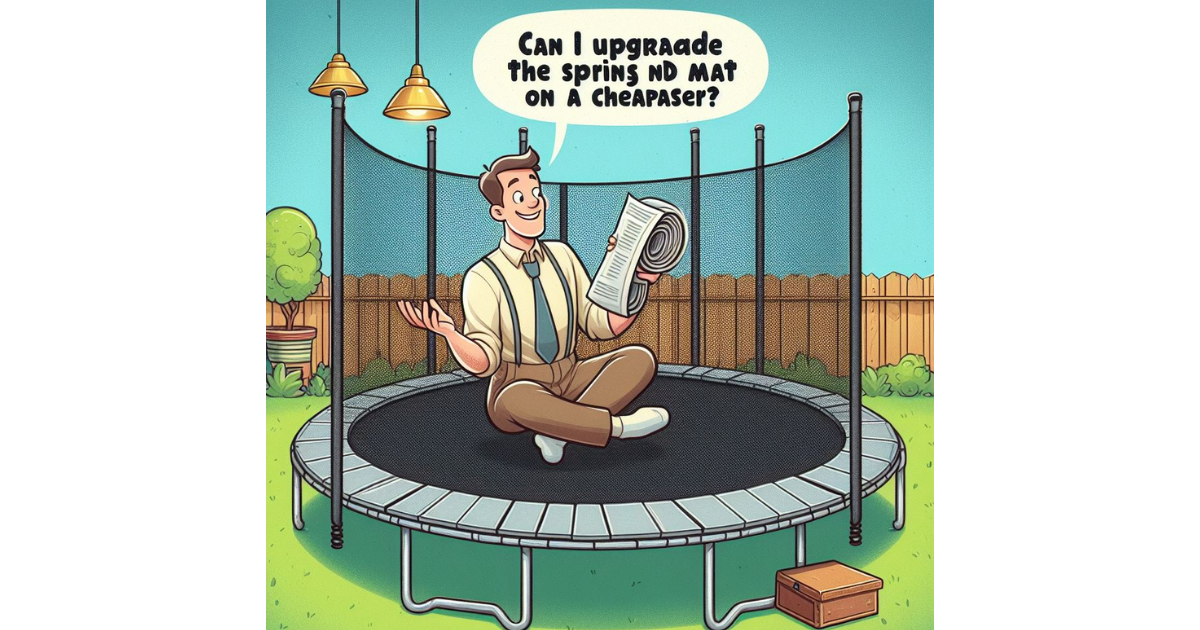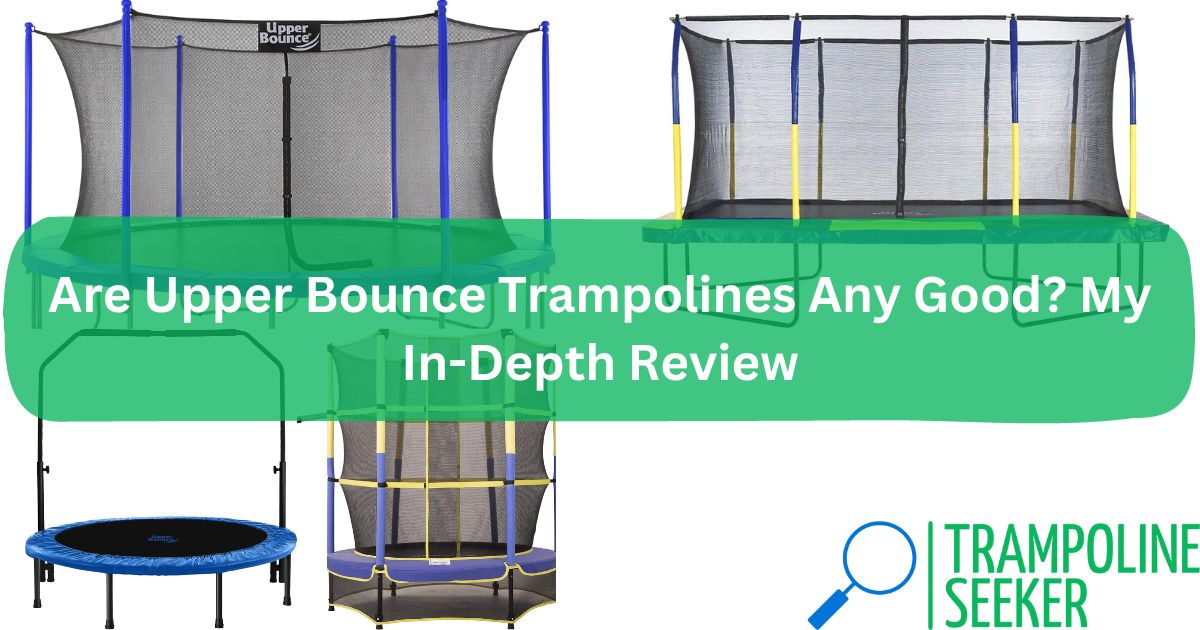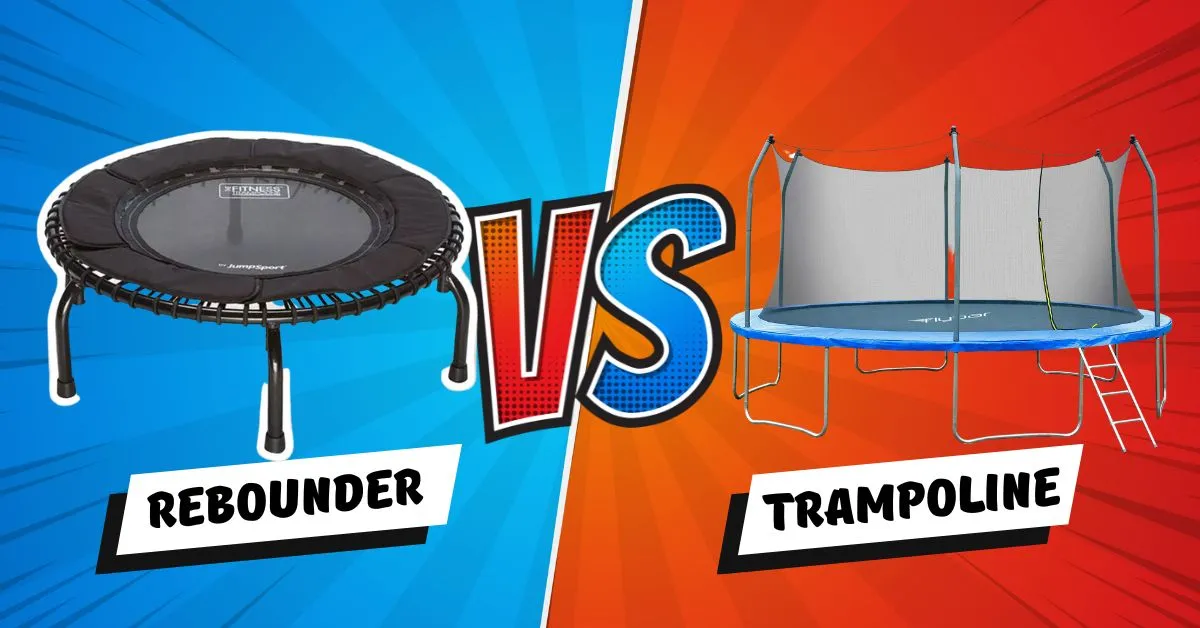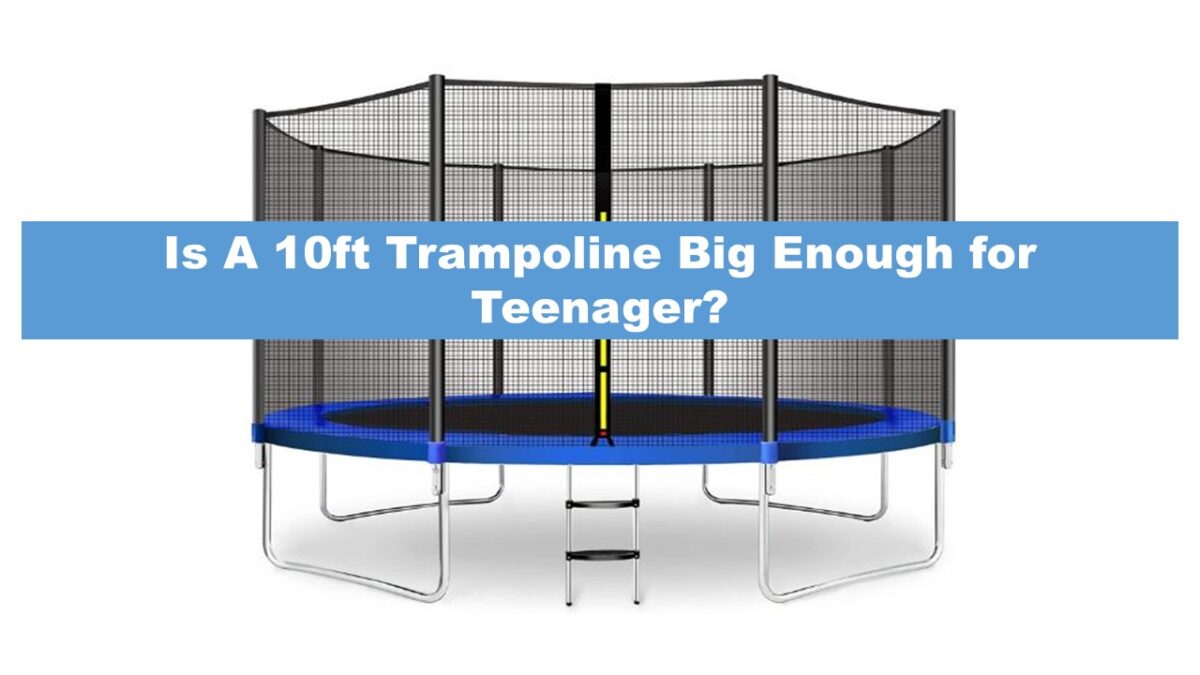Looking for instructions on how to put a trampoline in the ground? If your trampoline has come and you are ready to assemble it, you may use this instruction to help you.
Remember that this article is just intended to be a guide, not to completely replace the instructions that should have come with your in-ground trampoline.
Before you begin assembling and installing the in-ground trampoline kit, unpack everything and read the handbook to ensure you have all of the necessary components. Check off everything that you require and organize everything in the yard so that it is easily accessible. Also, take into account that some type of water mitigation, such as drainage, is a good idea.
Related Topics:
| 14 ft vs 16 ft Trampoline |
| Upper Bounce 10×17 Trampoline Reviews |
| Best Trampoline for Adults |
| Trampoline Back Pain |
| Old Trampoline Ideas |
How to Put a Trampoline in the Ground?
These are the simple steps that help you to Put a Trampoline on the Ground
- Mark The Dig Area and Set Up the Frame
- Digging the hole
- Finish The Frame and Place It Into The Hole
- Connect The Springs
- Attach The Pads
- Have A Good Time
Mark The Dig Area and Set Up the Frame
Begin by putting together the frame. You do not need to entirely build it; only get it to the point where you can identify the dig area.
Begin building it at the location where you intend to dig the hole. When doing so, make sure that the spring holes are pointed upwards. You can accomplish this with one person, but two will make it go faster.
Once the frame is in place, find a way to indicate the area where you want to begin digging (can use spray paint). You may wish to add 2-5 inches to the frame’s shape to make it easier to fit into the hole. Keep in mind that you may backfill this.
After you’ve made your frame and designated an area, you may start removing part of the turf to use as backfill later. You only need to save enough grass to hide your tracks.
Digging The Hole
Once you’ve conserved enough grass, you may go all out and dig the hole. The initial dig will take place at the shelf level. Consult your instructions for the needed ledge depth, but use a measuring instrument to finish each dig. Dig to this depth for the whole hole (not just the frame) to begin with, and make sure to measure all sides at several locations every few feet or so.
Mark out the location for the next hole once you’ve excavated the previous one. For shelf length requirements, review the size requirements once again. Because you will be backfilling this region, it is safe to add an inch or two. Then start digging the second hole, which will function as the bounce area, also known as the bowl area.
The hole’s sides do not have to be straight down. They should be rather steep but feel free to allow them to descend at an angle. This reduces the quantity of dirt that must be removed.
Rectangle Trampoline Hole Dimensions
Brand | Outer/Frame Hole Dimensions | Outer/Frame Hole Depth | Inner Hole Dimensions | Inner Hole Dept |
Avyna | 10×17′ | 9″ | 8’4″x15’4″ | 36″ |
TDU / Capital Play | 10×14′ | 10″ | 8’8″x12’8″ | 36″ |
Round Trampoline Hole Dimensions
Brand | Outer/Frame Hole Dimensions | Outer/Frame Hole Depth | Inner Hole Dimensions | Inner Hole Depth |
Avyna | 12′ | 9″ | 10’8″ | 36″ |
Avyna | 14′ | 9″ | 12’8″ | 36″ |
TDU (Retaining Wall) – | 14′ | 36″ (only one hole made) | – | – |
Finish The Frame and Place It into to The Hole
After you’ve dug your hole, it’s time to finish putting the frame together. Attach the retaining walls using a screwdriver to do this.
The retaining walls should already have screw holes, so all you have to do is line them up and start putting them on. To finish the attachment, start with the top holes and then go on to the lower holes. After that, insert the frame into the hole and place it on the shelf to ensure proper fit. If it fits properly, you may proceed; otherwise, you’ll need to make changes.
Once you’ve determined that the frame will fit, you may lay down the membrane. After that, drop the frame into the hole and proceed to the next step.
Connect The Springs
Once the frame is in place, you may begin attaching the mat with the springs. If you are building a rectangle trampoline, you should begin with the four corners and the center of the sides and work your way out from there. Working in opposites with someone will make it simpler since the tension will be balanced.
Once the springs are installed, you’ll note that the frame has shifted in quite a bit. At this stage, you should test your trampoline by jumping up and down on the mat to ensure that everything is safe.
If everything seems fine, you may begin backfilling the area between the retaining wall’s outer edge and the ground. Make every effort not to get any soil into the bowl. When you’re finished, pack it down tightly and re-turf it using part of the grass you preserved.
Attach The Pads
The final step in assembly is to place all of the pads. It’s better to start with all of the toggles on the pad, spherical ball facing the inside of the pad. Flip the pad over onto the trampoline and begin attaching it by looping the toggles onto the frame. Your handbook should include detailed instructions on how to accomplish this.
Have A Good Time
That’s all! You’ve finished the DIY assembly and are now ready to leap. Give it a shot right away and check whether everything appears to be in order. You’re now set for years of good old-fashioned enjoyment!
Frequently asked questions – How to Put a Trampoline in the Ground?
Can I Install A Trampoline In The Front Yard?
Although there are no regulations against the installation of a trampoline in the front yard, your insurance company may refuse to cover your property if you do so since it may be viewed as a liability.
Furthermore, if you reside in a subdivision or are a member of an association, it may be against the regulations. Furthermore, a trampoline in the front yard may appear to be a public park, and it is possible that random visitors will jump on it.
Can You Put A Trampoline On Artificial Grass?
Installing in-ground trampolines on turf is feasible and often advantageous. This is due to the synthetic grass always remaining green, lush, and visually pleasing. It’s a popular trend that’s only getting started.
Can I Put A Regular Trampoline On The Ground?
It is feasible to install an above-ground trampoline in the ground by attaching a retaining wall to your current trampoline. When buying a retaining wall for your standard trampoline, make sure the sizes match. The retaining wall should be the same size as the trampoline frame, not the jumping area.
The difference between installing a standard trampoline in the ground and utilizing an in-ground trampoline is that you will just dig one 3-foot-deep hole instead of two (one of which is for creating an additional hole for the shelf).
Can I Put A Trampoline On Gravel, Concrete, Or In My Garage?
For safety reasons, it is not recommended to build a trampoline on top of gravel or concrete. There is a chance that a kid, adult, or even a pet will fall off and harm themselves severely on the hard ground.
However, if you really must build a trampoline in your garage or on concrete, there are techniques to cushion the surface and childproof it to make it safe.
Is It Safe To Use A Trampoline In The Winter?
If you live in a location prone to extreme cold and huge amounts of snow, it is preferable to either cover you’re in-ground trampoline or disassemble and store your above-ground trampoline during the winter. Snow and icicles can accumulate on the trampoline mat, thereby shortening its lifespan.
Can I Put A Trampoline On Uneven Ground?
It is feasible to place a trampoline on uneven or sloping terrain by excavating a trench to level the ground. The excavating for building a trampoline on a slope is significantly more strenuous, and you’ll need to take a slew of measurements to make it work.


